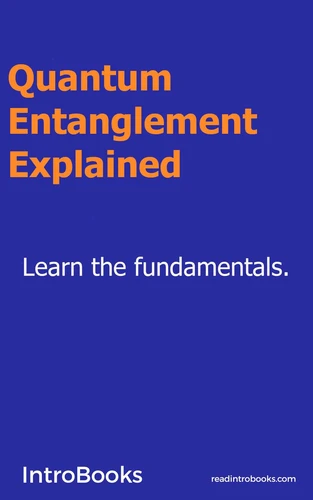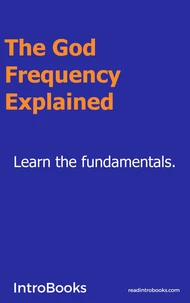Quantum Entanglement Explained
Par :Formats :
Disponible dans votre compte client Decitre ou Furet du Nord dès validation de votre commande. Le format ePub est :
- Compatible avec une lecture sur My Vivlio (smartphone, tablette, ordinateur)
- Compatible avec une lecture sur liseuses Vivlio
- Pour les liseuses autres que Vivlio, vous devez utiliser le logiciel Adobe Digital Edition. Non compatible avec la lecture sur les liseuses Kindle, Remarkable et Sony
 , qui est-ce ?
, qui est-ce ?Notre partenaire de plateforme de lecture numérique où vous retrouverez l'ensemble de vos ebooks gratuitement
Pour en savoir plus sur nos ebooks, consultez notre aide en ligne ici
- FormatePub
- ISBN8223976523
- EAN9798223976523
- Date de parution01/09/2023
- Protection num.pas de protection
- Infos supplémentairesepub
- ÉditeurDraft2Digital
Résumé
No matter how far away they are, particles of energy or matter can get entangled and interact predictably with one another. This phenomenon is known as entanglement in quantum theory. In physics, the concept of entanglement refers to how particles of matter or energy can join up and interact predictably with one another, regardless of their distance from one another. Because of this inexplicable connection that they nevertheless maintain, particles, including electrons and photons, can get entangled with one another in pairs.
Correlation is the term for this procedure. Considering the spin state of an entangled particle enables one to infer that the spin of the particle's partner or pair is in the opposing direction. If one particle, for instance, is spinning up, its counterpart is spinning down. It becomes even stranger because, to human understanding of superposition phenomena, one can measure a particle that simultaneously has an uneven spin state (up and down) while having no single direction of spin before measurement.
Correlation is the term for this procedure. Considering the spin state of an entangled particle enables one to infer that the spin of the particle's partner or pair is in the opposing direction. If one particle, for instance, is spinning up, its counterpart is spinning down. It becomes even stranger because, to human understanding of superposition phenomena, one can measure a particle that simultaneously has an uneven spin state (up and down) while having no single direction of spin before measurement.
No matter how far away they are, particles of energy or matter can get entangled and interact predictably with one another. This phenomenon is known as entanglement in quantum theory. In physics, the concept of entanglement refers to how particles of matter or energy can join up and interact predictably with one another, regardless of their distance from one another. Because of this inexplicable connection that they nevertheless maintain, particles, including electrons and photons, can get entangled with one another in pairs.
Correlation is the term for this procedure. Considering the spin state of an entangled particle enables one to infer that the spin of the particle's partner or pair is in the opposing direction. If one particle, for instance, is spinning up, its counterpart is spinning down. It becomes even stranger because, to human understanding of superposition phenomena, one can measure a particle that simultaneously has an uneven spin state (up and down) while having no single direction of spin before measurement.
Correlation is the term for this procedure. Considering the spin state of an entangled particle enables one to infer that the spin of the particle's partner or pair is in the opposing direction. If one particle, for instance, is spinning up, its counterpart is spinning down. It becomes even stranger because, to human understanding of superposition phenomena, one can measure a particle that simultaneously has an uneven spin state (up and down) while having no single direction of spin before measurement.






















